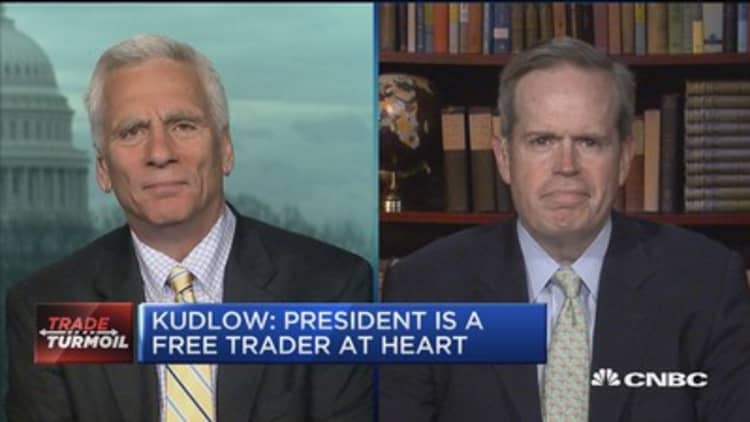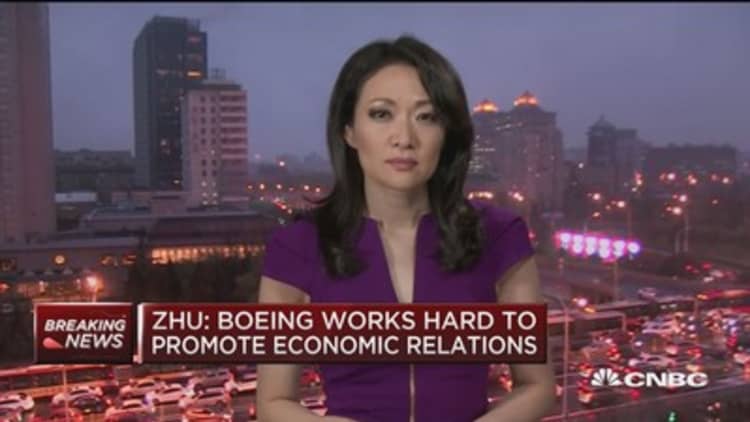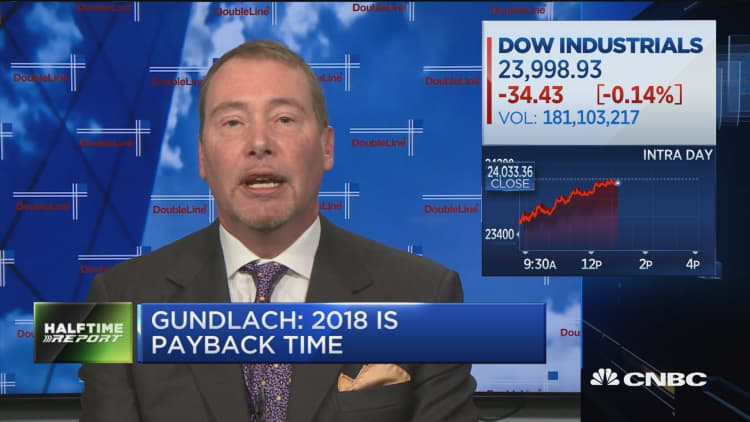China's list of more than 100 American products under threat of tariffs targets the U.S. chemicals and plastics sectors at a time when parts of the industry are investing heavily in new production.
About 40 percent of the goods on the list are plastics, petrochemicals, petroleum products and specialty chemicals. To be sure, the proposed tariffs amount to a response to President Donald Trump's threat to slap taxes on 1,300 Chinese goods and may never come to fruition.
But analysts say the prospect of a trade war increases uncertainty about demand in a major foreign market for American companies that are planning to invest billions of dollars at home in large-scale chemicals projects.
The biggest concern is how does this escalate? And then does it ultimately impact the global economy? If we go into another 2009 environment, it would really pause investments.Steve Lewandowskivice president of global olefins, IHS Markit
"Nearly $185 billion in new chemical factories, expansions and restarts of facilities around the country are predicated on current tariff schedules, and market shifts caused by tariff increases may convince investors to do business elsewhere," the American Chemistry Council warned Wednesday.
"We strongly urge the U.S. and China to reach a productive and meaningful agreement before any of the proposed tariff schedules go into effect," the industry group said.
China is the third-biggest export market for U.S. chemicals behind Canada and Mexico, according to an analysis of U.S. Department of Commerce data performed by the council.
Those shipments were worth $10.6 billion in 2016, the latest year included in the council's analysis. For comparison, shipments to Canada drummed up nearly twice that amount that year, while Mexico spent about $19 billion on American chemicals.

Demand in China has helped North American and European chemical companies grow while consumption at home has stagnated, according to a briefing by McKinsey & Co. Rapid economic growth in China means the country has not been able to develop its own feedstocks fast enough to fuel its massive industrial sector.
"China tries to be self sufficient with any product that they can. Some are easier than others," said Alex Lidback, vice president for chemicals at energy research firm Wood Mackenzie. "Depending on the feedstock availability, the technology availability — all those things have an impact on how quickly they can add capacity."
It's difficult to make a blanket statement about the potential impact of tariffs on the roughly 40 products China targeted across the chemicals, energy and plastics universe. But analysts say the effects could be meaningful for some slices of the U.S. chemical industry.
In Lidback's view, one of the targeted items that stands out is polyethylene, one of the most widely used plastics.
U.S. oil majors and chemical companies have announced major investments in the petrochemical plants that produce polyethylene. The building boom is being driven by a surge in U.S. natural gas output, which has yielded a cheap and abundant source of byproducts that go into American polyethylene.

"It's a concern without a doubt because the U.S. has a good cost position, they're adding capacity and the Chinese market is very short of polyethylene as a whole, so they need the imports to meet their demand growth," Lidback said.
Another U.S. export that caught Lidback's eye is propane. China has been investing in plants that turn propane into propylene, and those facilities have been counting on a steady supply of pure U.S. propane. A big wave is set to come online in 2019 and 2020, Lidback said.
U.S. propane exports have been have been on the rise over the last few years, according to Andy Lipow, president of Lipow Oil Associates. Last year, China was the third-largest buyer of propane, behind Japan and Mexico, accounting for about 13.6 percent of U.S. exports, according to his analysis.
Some of the companies involved in the U.S. propane export business include Enterprise Products, Targa and Phillips 66.
If the tariffs were enforced, one scenario could see a reshuffling of global trade flows, said Steve Lewandowski, vice president of global olefins at IHS Markit. Since there is currently enough capacity of key plastics to meet global demand, China could potentially source the products from elsewhere, and the United States would then step in to supply other markets.
In his view, the impact of tariffs are likely not enough to cancel planned projects. But the effects of a worsening trade war could slow global economic growth and crimp demand for plastics, making some project economics questionable.

"These in themselves probably won't upset the apple cart, but it's what happens politically around it," Lewandoski said.
"The biggest concern is how does this escalate? And then does it ultimately impact the global economy? If we go into another 2009 environment, it would really pause investments."
Nick Vafiadis, vice president of plasticts at IHS Markit, notes that China singled out only one of three main types of polyethylene: a low-density category commonly used in packaging, which is fairly well supplied in China.
Still, there is more than a million metric tons of new low-density U.S. polyethylene capacity coming online through next year, most of which is for export, particularly to China, he said. Dow Chemical is ramping up a new facility now, while Formosa and Sasol have plants coming online soon.
Many parts of the U.S. chemicals industry are set up to meet domestic demand, but Chinese tariffs raise questions about the ability of American companies to sell their surplus products on the international market, said Kathy Hall, executive editor of PetroChem Wire.
"If you're stemming the overflow from the get-go, it's a little bit questionable about how that plays out for these news plants," she said, referring to new plastics and petrochemical facilities.
Another question is whether tariffs would affect American firms that have long-term contracts with Chinese partners.
"For companies that are very dependent on China, that have decadelong contract agreements, is that affected by this? I don't know. I wouldn't think so, but I don't know," she said.


